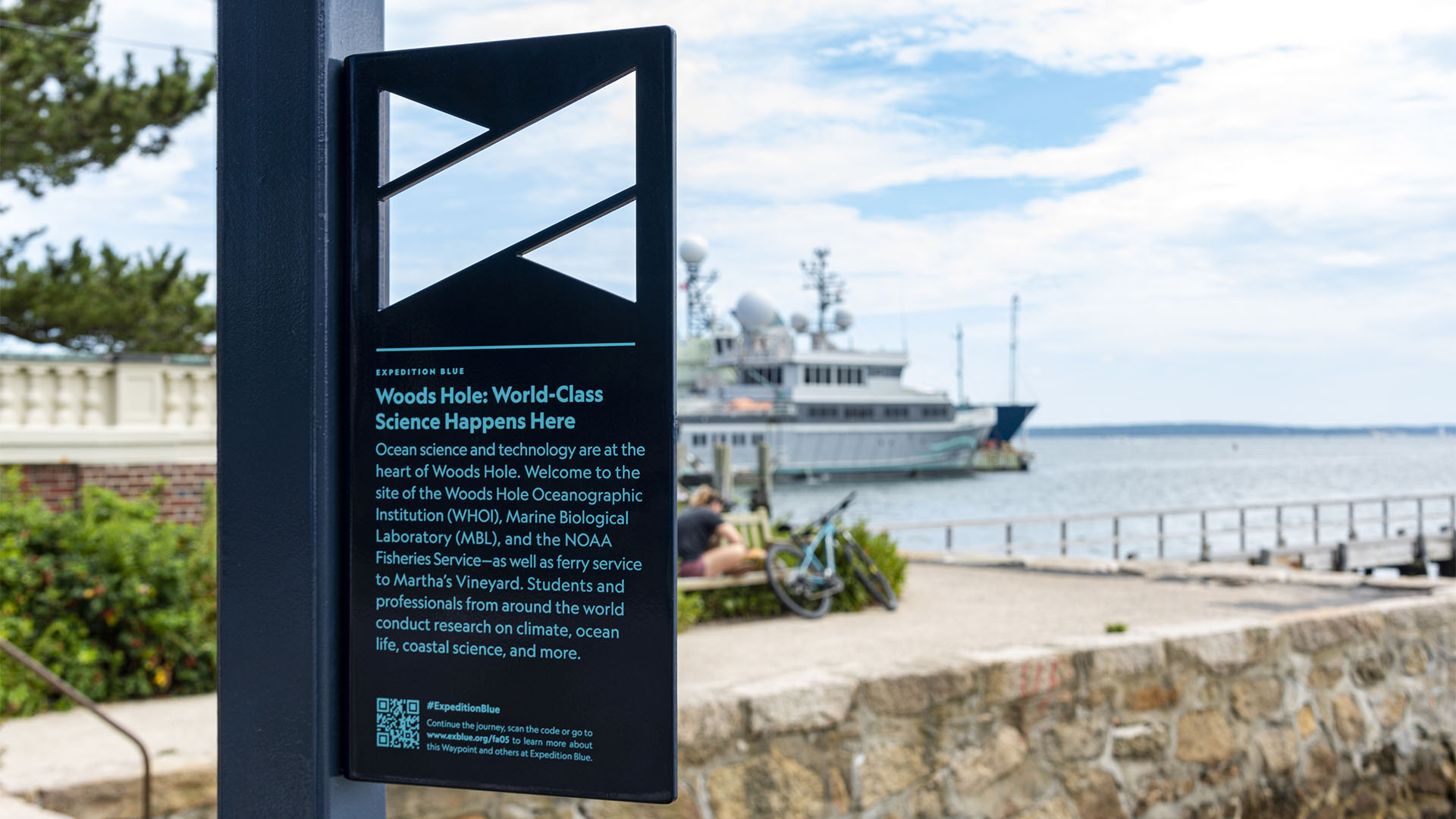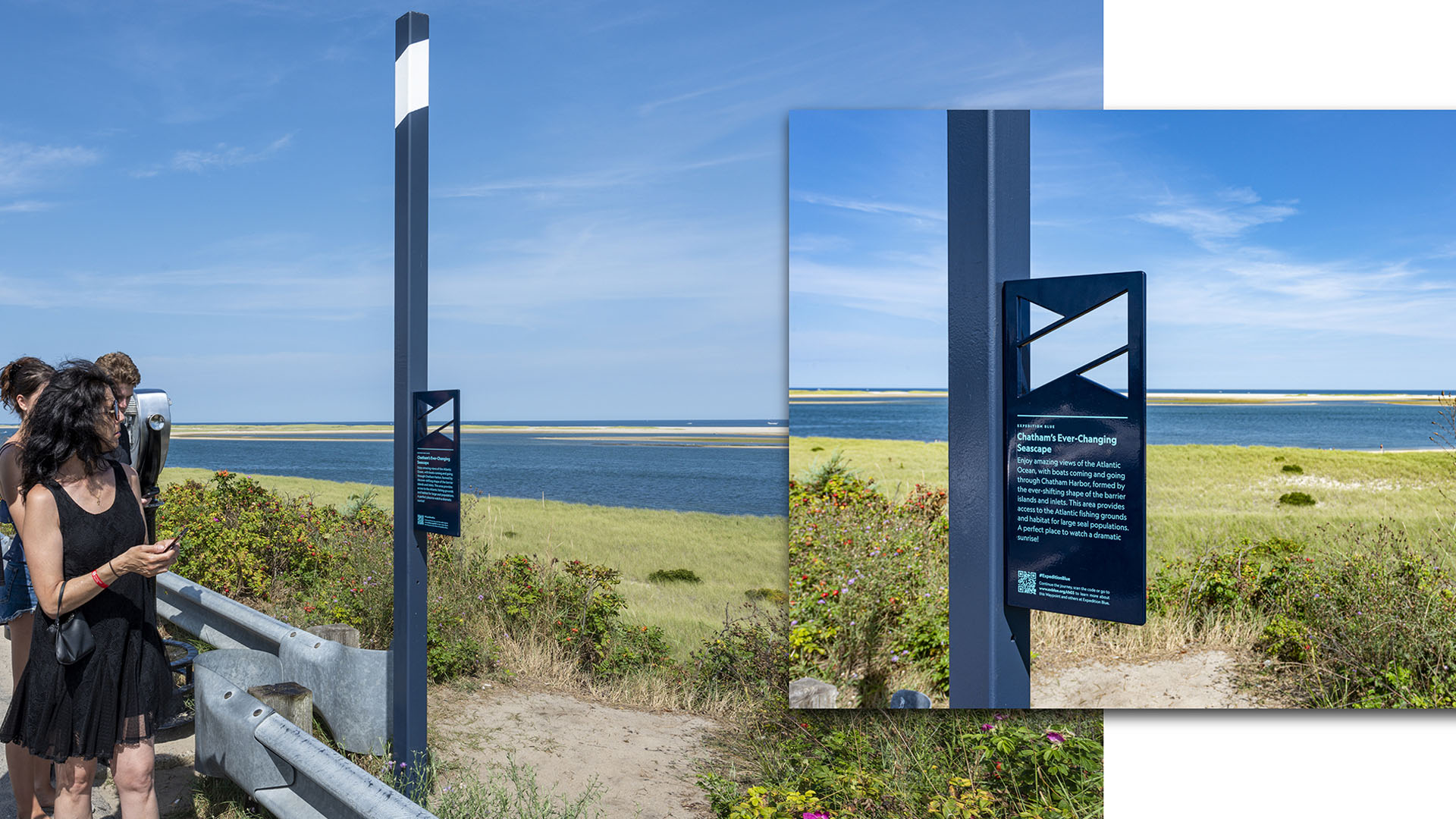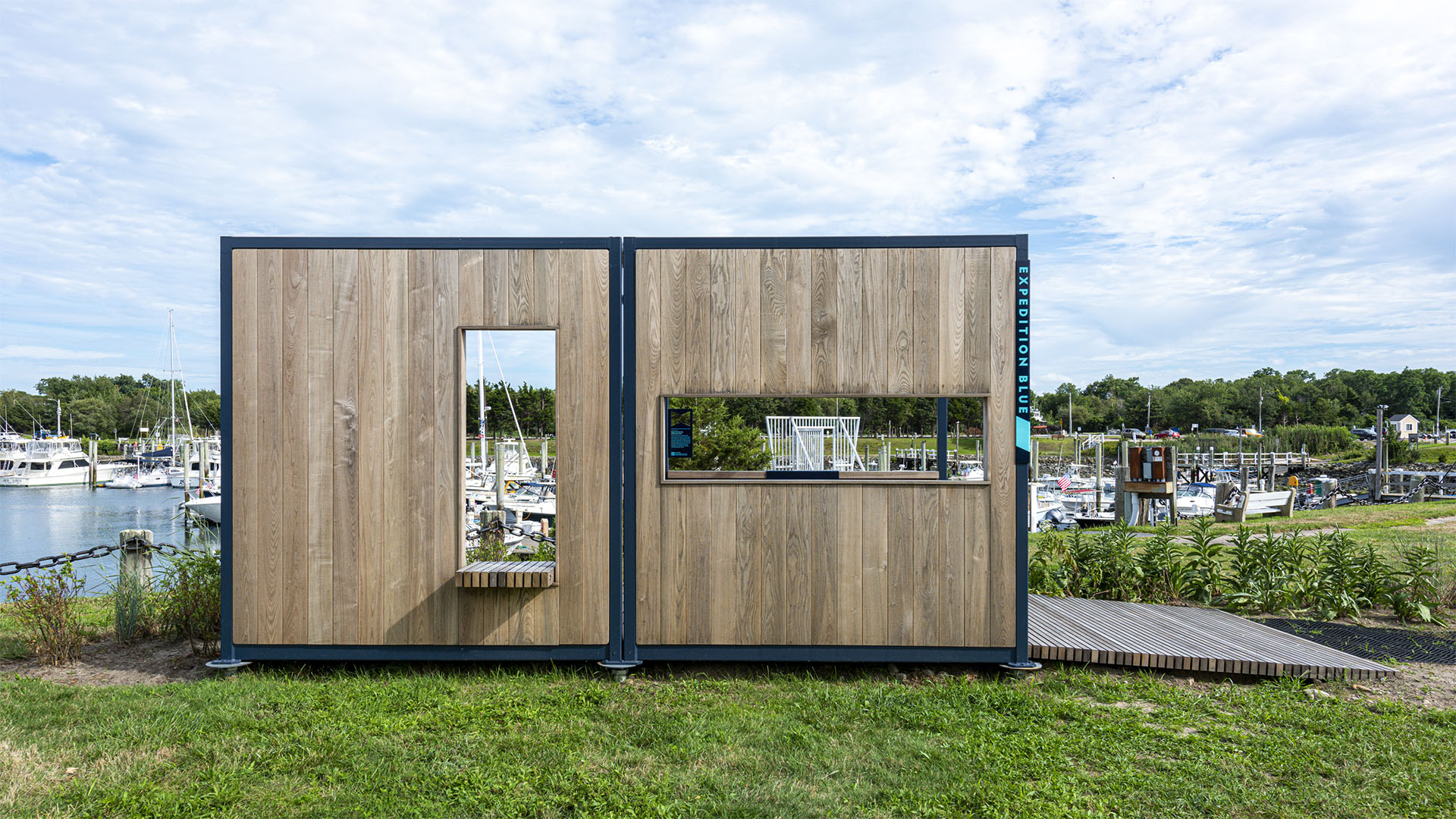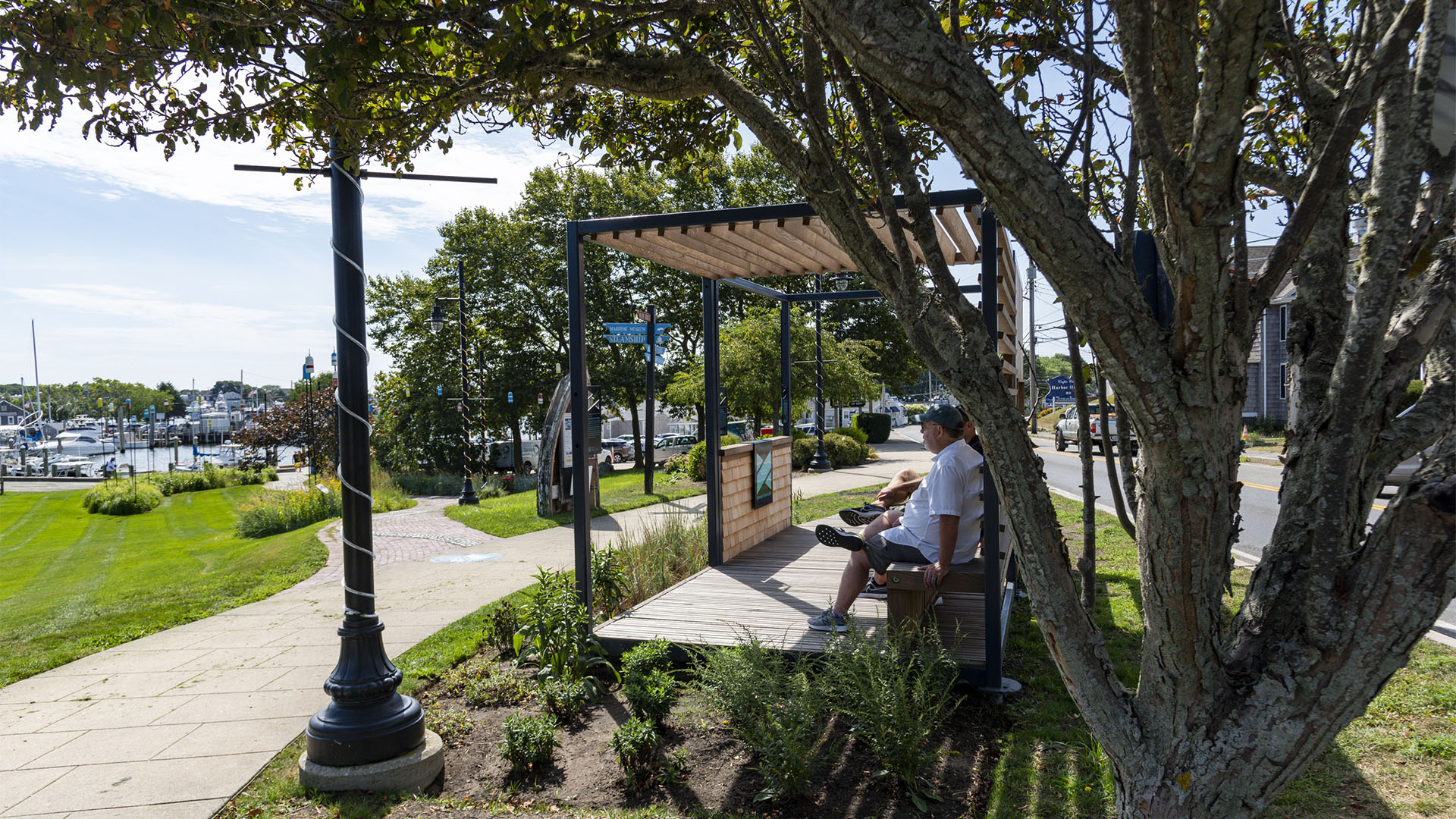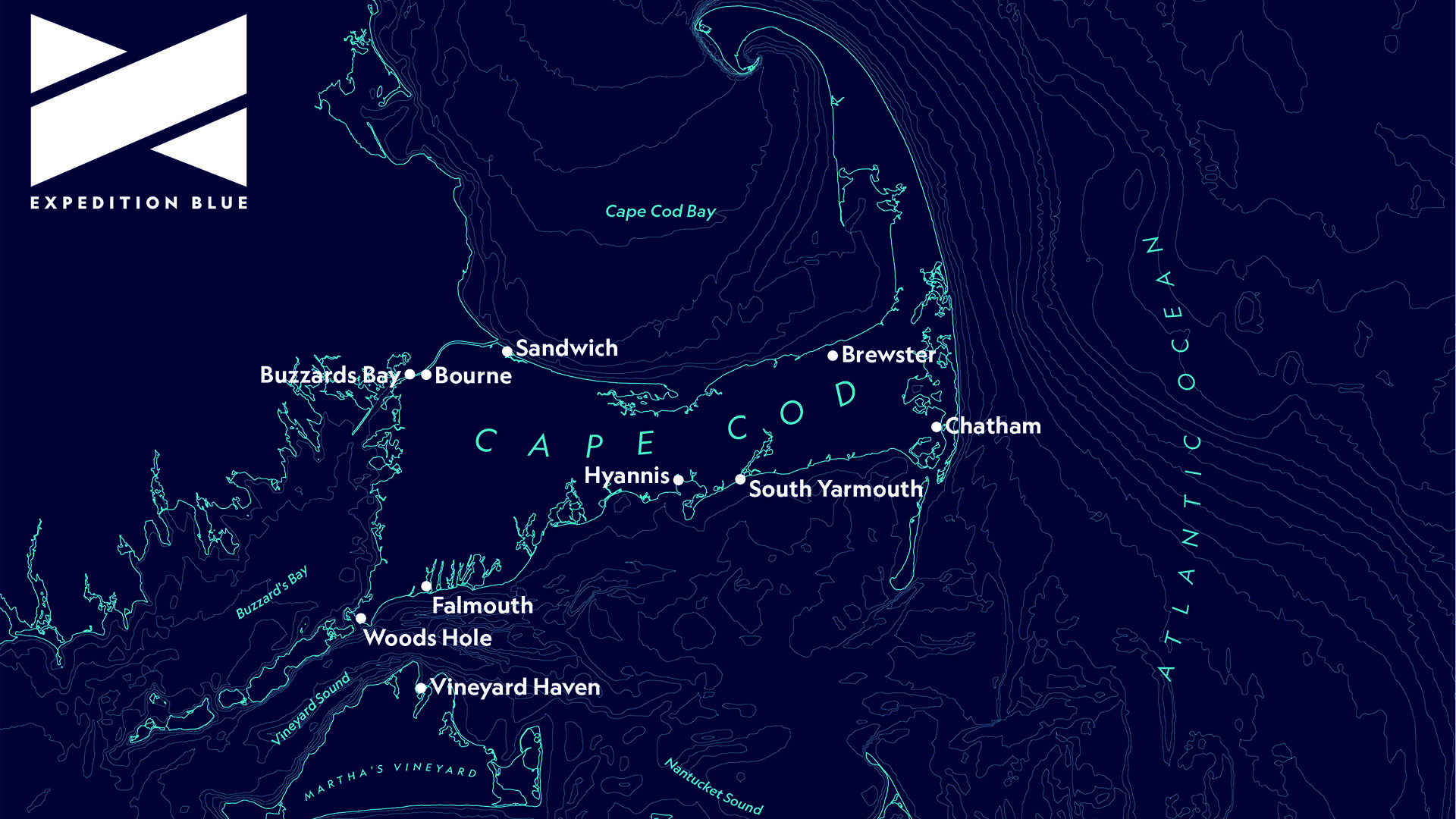Expedition Blue
Expedition Blue is a project that seeks to explain, engage, and sustain the water-based, or “blue” economy that hides in plain sight across the region of Cape Cod and the Islands. Whether the sector is oyster farming, marine robotics, ferry transportation or other shades of blue occupations, this way of life looks to balance economic livelihood and ecological stewardship. Cape Cod and the nearby islands of Nantucket and Martha’s Vineyard stretch out over 100 square miles and 11 villages that range from working ports to vacation destinations to bedroom communities. The challenge of the project was to craft a scattered site installation in which each waypoint made sense alone but was clearly part of a greater whole. The design team collaborated to provide the client, the Cape Cod Chamber of Commerce, an integrated system of architecture, wayfinding, landscape, brand identity, visitor experience and marketing tools and tactics.
Agency
sparks+sullivan
Practice Area
Client
Cape Cod Chamber of Commerce
Industry
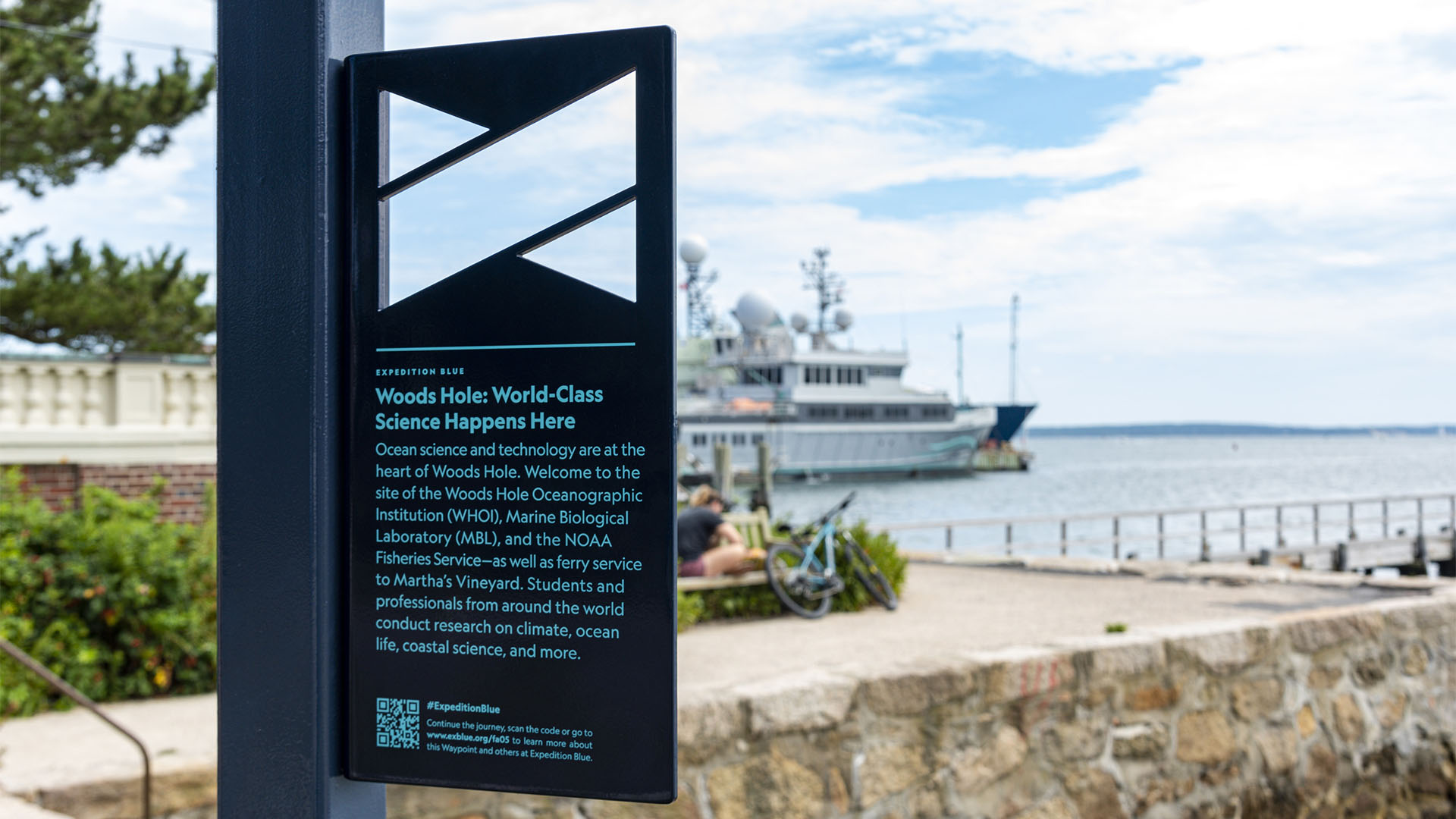
Project Vision
We envisioned the project as an invitation and we emphasized openness, opportunity and a new perspective on hidden potential of economic development that values not just profit, but place and community. As such, the Chamber of Commerce has used metrics from the responsive website to understand user interest in locations and topics to tailor events and informal programs at the installations, strengthening outreach to their two targeted audiences.
The Challenge
The project aims to reach two overlooked audiences. First, we wanted to reach young Cape Codders (middle and high schoolers) who do not see a future for themselves on Cape Cod. 25% of people who grow up on Cape Cod eventually leave, largely because opportunity is restricted to tourist-based jobs. With fresh, bold forms and graphics the project speaks directly to them and reveals ways to stay, with a wide range of opportunities for them to work, live and cherish Cape Cod. Secondly, we wanted to attract small entrepreneurs who might relocate to Cape Cod, finding new sectors of work within the Blue Economy.

From oyster farming in Sandwich to marine robotics at the Woods Hole Oceanographic Institution, the project invites audiences to see the “blue economy” in situ.
Kwesi Budu-Arthur

Fresh, bold forms and graphics aim to connect with middle and high schoolers want to stay on Cape Cod, but work in non-tourism sectors.
Kwesi Budu-Arthur
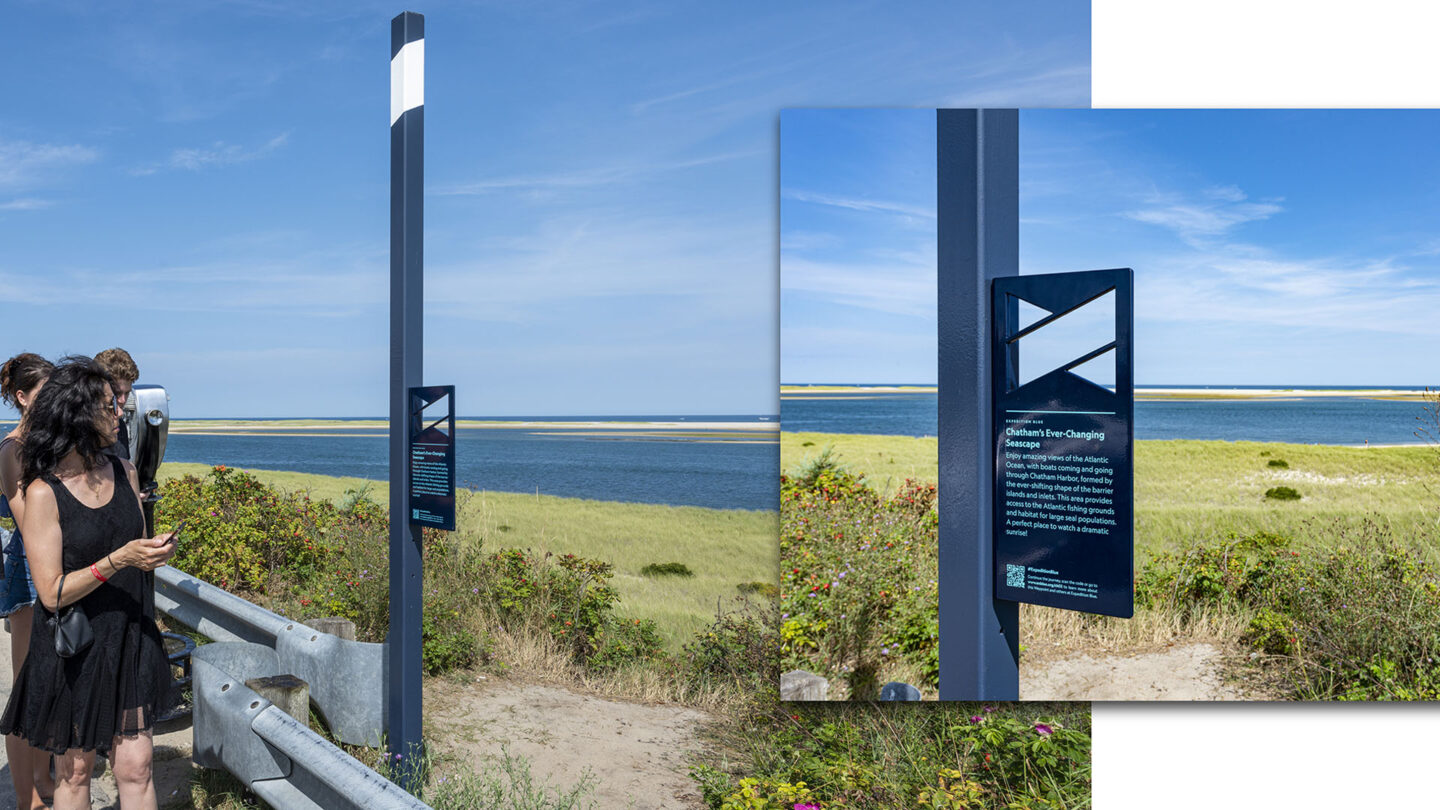
The logomark’s “X” represents the intersection of economy and environment. Its proportions and shape, inspired by nautical flags, enable it to function as a window.
Kwesi Budu-Arthur
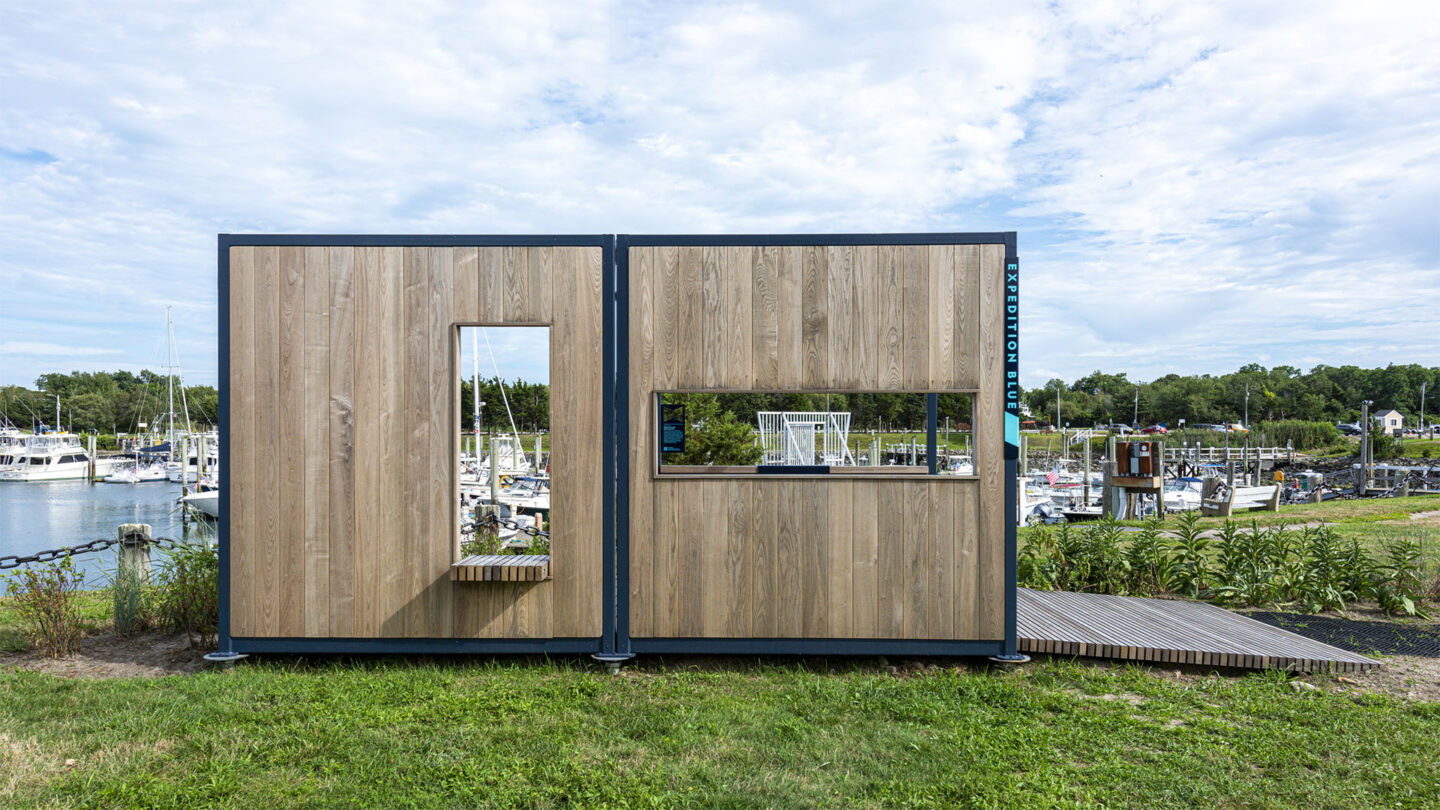
The structures comprise an informative outdoor museum that celebrates the Cape and Islands in a novel way and provides an entry point for new participation.
Kwesi Budu-Arthur
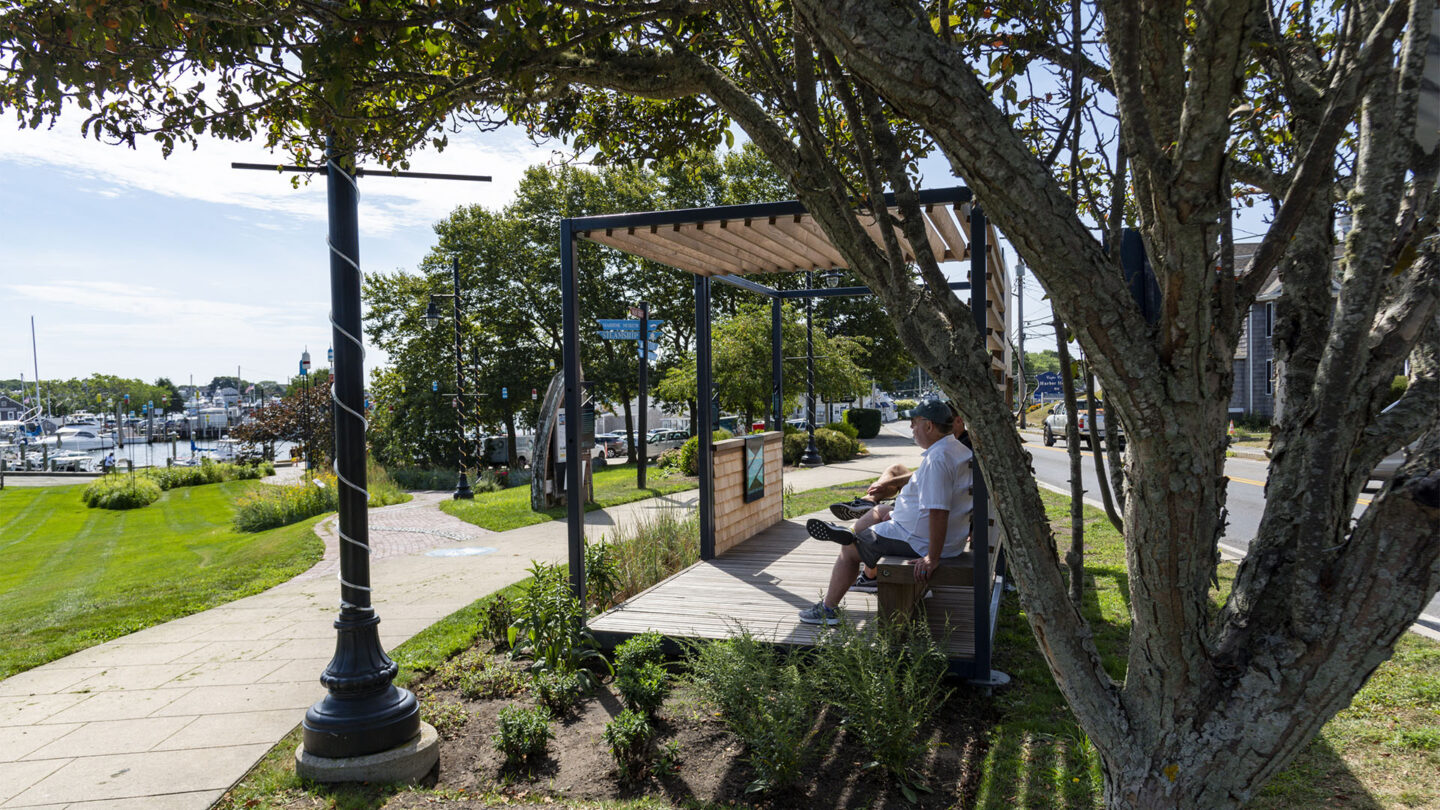
The structures draw inspiration from an 18th century network of shelters along the coast of Cape Cod, simple 8’x8’x8’ wood shacks, refuges for shipwrecked sailors.
Kwesi Budu-Arthur
Design + Execution
Expedition Blue’s logomark references the letter “X” and represents the intersection of economy and environment. Its proportions and shape, inspired by nautical flags, are designed to enable it to function as a frame or window for viewing the blue economy.
When we looked at ways to connect with the past while still looking into the future, we researched the historic small structures of Cape Cod as an embodiment of the resourcefulness and resilience that represents the principles of Cape Cod’s current and future water-based economy. The primary inspiration was an early 18th century network of shelters along the coast of Cape Cod, simple 8’x8’x8’ wood shacks, intended as refuges for shipwrecked sailors who made their way to shore. These community-maintained shelters were lightly equipped to provide tools for people to survive in their necessary, but sometimes perilous, relationship with the sea. While our aim is less dire in terms of personal survival, we recognized that our society is still trying to find a balance between living with our environment and making a living from it. Other lean and flexible Cape Cod construction, from Wampanoag wetu—branch-built shelters–to 20th century modernist dune structures, inspired the waypoint forms that now serve as a front door to welcome and retain Cape youth and entrepreneurs.
Balancing economy and ecology is an ongoing story on Cape Cod, with an increased urgency for the Cape’s future; Expedition Blue, rooted in nature, tells that story.
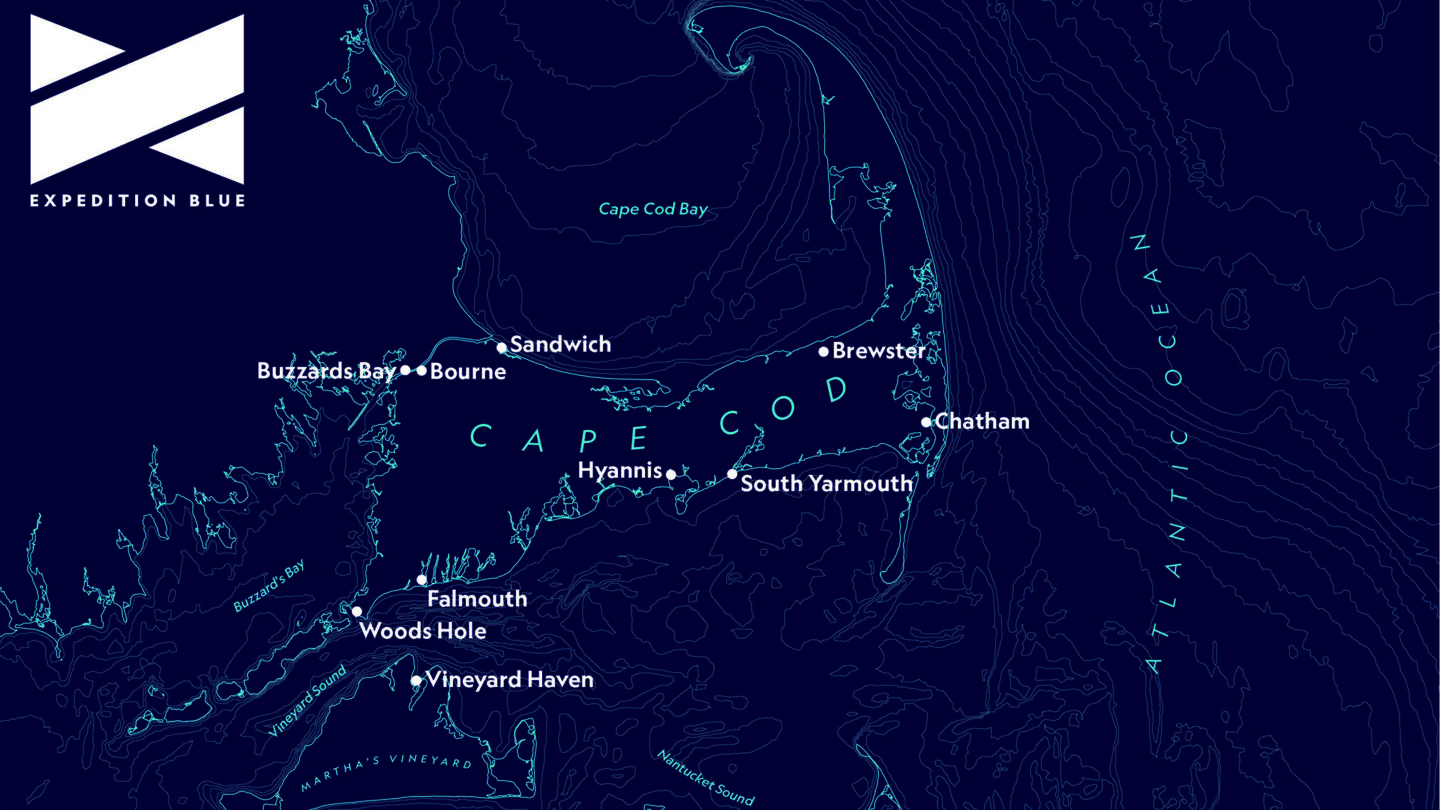
The waypoints stretch out over 100 square miles and 11 villages across Cape Cod and the
nearby islands of Nantucket and Martha’s Vineyard.

Balancing economy and ecology is an ongoing story on Cape Cod, with an increased urgency; Expedition Blue, rooted in nature, tells that story.
Kwesi Budu-Arthur
Project Details
Design Team
CambridgeSeven (architecture and interpretive): Chris Muskopf (principal in charge), Alana Barnes, Sharon Clarke, Matt Cox, Peter Sollogub, Amy Hastings
Collaborators
Bishop Land Design (landscape architecture): Scott Bishop, Massoud Baghieri, Jonathan Cave, Ashna Jaiswal
Mystic Scenic Studios (fabrication): Allan McNabb
sparks+sullivan (brand and environmental graphics): Gwen Sparks Sullivan, Ryan Sullivan
Fire Tower Engineering (structural engineering): Duncan McElroy
Coastal Engineering (permitting): Sean Riley, Carla Davis
Dative (web design): Chris O’Brien
Fennessy Consulting (cost estimation): Seamus Fennessy
Photo Credits
Kwesi Budu-Arthur, CambridgeSeven
Michael Chung
Open Date
August 2021
